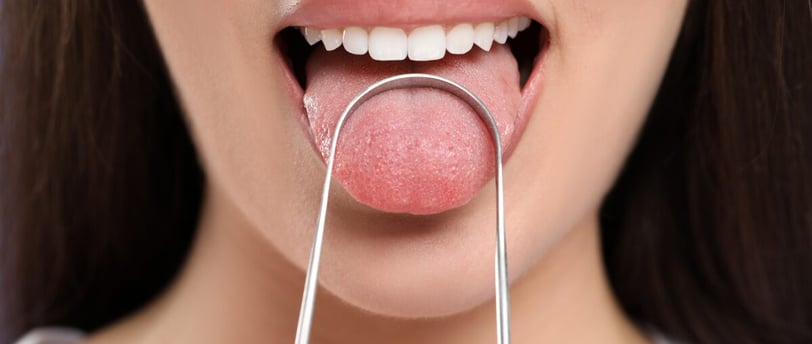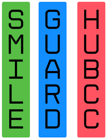The Importance of Tongue Cleaning: A Key to Fresh Breath and Oral Hygiene
BRIGHT SMILES TIPS
11/11/20244 min read


Understanding the Tongue's Role in Oral Health
The tongue is a multifaceted muscular organ situated within the oral cavity, playing vital roles in various aspects of oral health and overall well-being. Anatomically, the tongue is covered with small projections called papillae, which contain taste buds and are crucial for the sensation of taste. Additionally, the surface of the tongue provides an ideal environment for bacteria, food particles, and dead cells, creating a potential source of oral hygiene issues. The accumulation of these substances can not only result in bad breath but can also contribute to more serious dental problems.
The unique structure of the tongue contributes significantly to taste perception. Taste buds located on the papillae interact with food molecules, allowing individuals to experience basic tastes such as sweet, salty, sour, bitter, and umami. This sensory function is essential for the enjoyment of food and can influence nutritional choices, thereby indirectly affecting systemic health. However, if the tongue is not appropriately cleaned, the buildup of residues can diminish its effectiveness in taste perception, affecting appetite and potentially leading to poor dietary habits.
Beyond sensation, the tongue plays a pivotal role in digestion. It aids in the mechanical process of food manipulation, facilitating the formation of a cohesive bolus for swallowing. This process is integral to the digestive system's functioning. Unfortunately, neglecting tongue hygiene can lead to an overgrowth of harmful bacteria, which can not only cause halitosis but may also disrupt overall digestive health due to the potential for pathogens to enter the gastrointestinal tract. In summary, understanding the anatomy and functions of the tongue underscores the importance of maintaining its cleanliness to promote fresh breath and optimal oral hygiene. Regular tongue cleaning should be considered an essential component of a comprehensive oral care routine.
The Connection Between Tongue Cleaning and Fresh Breath
Maintaining fresh breath is an essential component of oral hygiene, and tongue cleaning plays a critical role in achieving this goal. The tongue harbors a diverse community of bacteria, which can proliferate and contribute significantly to bad breath, also known as halitosis. These bacteria thrive in the warm, moist environment of the mouth, particularly on the surface of the tongue, where food particles and dead cells can accumulate. Studies have shown that the majority of the bacteria responsible for bad breath reside on the tongue, particularly towards the back, where it is difficult to reach during regular brushing.
When left uncleaned, the buildup of bacteria and debris can lead to the production of volatile sulfur compounds (VSCs), responsible for the characteristic foul odor associated with halitosis. Expert opinions suggest that incorporating tongue cleaning into daily oral hygiene routines significantly reduces the bacterial load on the tongue, which in turn diminishes the production of these odor-causing compounds. Research has demonstrated that individuals who regularly use tongue scrapers or brushes experience notably fresher breath compared to those who neglect this practice.
There are various methods and products available for effective tongue cleaning. Tongue scrapers, often made from plastic or stainless steel, are specifically designed to remove the thin film of bacteria and food residue from the tongue’s surface. Additionally, specialized toothbrushes with built-in tongue cleaning features can also be beneficial. The process of tongue cleaning is simple yet effective and can be performed in conjunction with regular brushing and flossing. By prioritizing tongue hygiene, individuals can take significant strides towards fighting halitosis and enhancing their overall oral health.
Tongue Cleaning Techniques and Best Practices
The practice of tongue cleaning is essential for maintaining oral hygiene and achieving fresh breath. Various techniques can be employed, ranging from traditional methods to modern tools. One of the most common approaches is using a toothbrush. To effectively clean the tongue with a toothbrush, follow these steps: first, apply a small amount of toothpaste onto the bristles. Next, gently brush the surface of the tongue from the back to the front. It is advisable to perform this action for approximately 30 seconds, ensuring that the entire surface area has been addressed. Rinse thoroughly with water afterward. This method not only helps in removing debris but also stimulates the taste buds, enhancing the overall oral experience.
Alternatively, tongue scrapers are gaining popularity as a more tailored tool for tongue cleaning. These implements are specifically designed to reach areas where a toothbrush may not be as effective. To use a tongue scraper, begin by placing it as far back on the tongue as is comfortable. Gently pull the scraper forward, applying light pressure to remove any buildup. Rinse the scraper after each pass, repeating this several times until the tongue appears clean. This technique can be performed once or twice a day, ideally in the morning before eating and brushing your teeth.
While practicing tongue cleaning, it's important to address common misconceptions, such as the belief that vigorous scraping is necessary for effectiveness. In reality, excessive force can lead to injury or irritation of the tongue's surface. Most dental professionals recommend a gentle approach. Additionally, tongue cleaning should not replace regular dental hygiene practices, but rather complement them. Performing tongue cleaning at consistent intervals will yield better results. Overall, incorporating these methods into daily routines can significantly enhance oral hygiene and contribute to fresher breath.
Incorporating Tongue Cleaning into Your Daily Oral Hygiene Routine
Integrating tongue cleaning into your daily oral hygiene routine is essential for achieving optimal oral health and fresh breath. The most effective way to incorporate this practice is to establish a sequence of tasks that includes brushing your teeth, flossing, and cleaning your tongue. Dentists typically recommend cleaning your tongue after brushing your teeth to ensure that any residual bacteria and food particles are effectively removed. This sequence not only increases the efficiency of your oral hygiene efforts but also enhances the overall cleanliness of your mouth.
When it comes to selecting products that complement tongue cleaning, there are several options available. Tongue scrapers, often made from stainless steel or plastic, are designed specifically for this purpose and can effectively remove the accumulated buildup on the tongue's surface. Additionally, some toothbrushes come equipped with a dedicated tongue cleaner on the reverse side, providing a dual-purpose tool for maintaining oral hygiene. These products can be easily incorporated into your existing oral care regimen, ensuring thorough cleaning.
Encouraging good oral hygiene habits in both children and adults is vital for long-lasting health benefits. For children, demonstrating how to clean their tongues through engaging activities or incorporating toy models of teeth can help them understand the importance of this practice. Establishing a routine that includes tongue cleaning can help instill the value of oral hygiene from an early age. For adults, setting reminders or incorporating tongue cleaning into their self-care rituals can promote consistent practice.
Routine tongue cleaning not only contributes to improved breath freshness but also enhances overall health by reducing the bacteria in the mouth. This practice can play a significant role in preventing potential oral issues, ultimately leading to better health and well-being.
